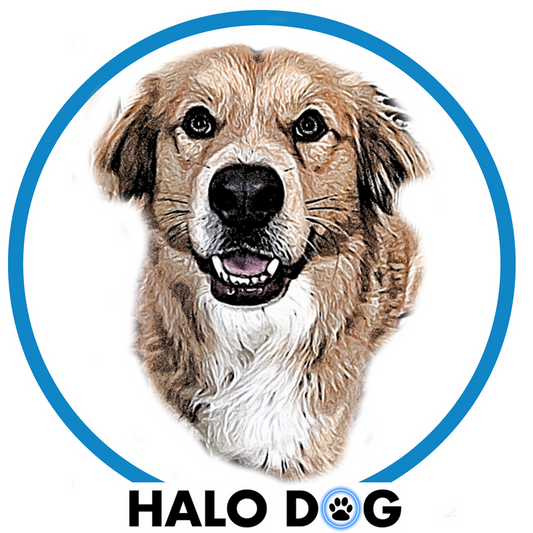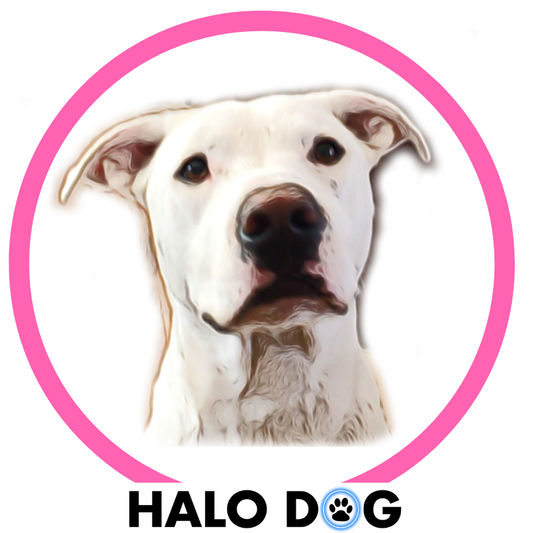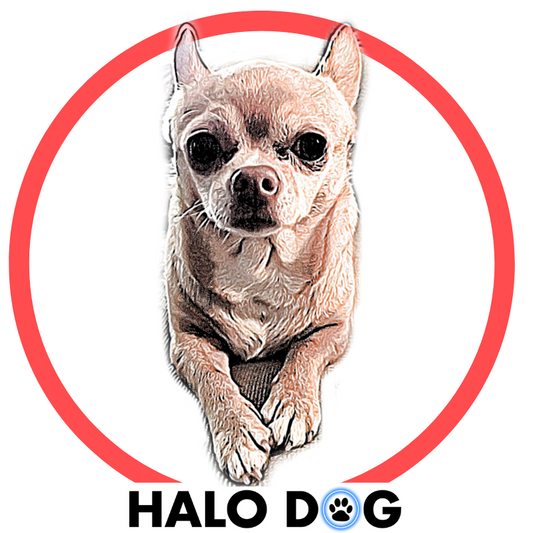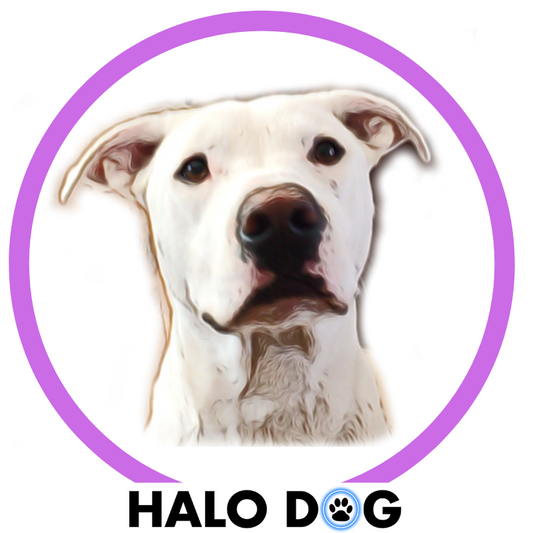
5 Signs Your Dog's Collar is Too Tight (And Why It Matters More Than You Think)
Share
Spoiler alert: Your dog can't exactly tap you on the shoulder and say "Hey, this thing is choking me"
We've all been there – squeezing into jeans that fit perfectly last summer, pretending we can still breathe normally while slowly turning purple. Well, our dogs can't voice their discomfort quite as dramatically, but they're definitely sending us signals when their collar has gone from "snug fit" to "medieval torture device."
Let's dive into the telltale signs that your pup's collar needs an intervention, because nobody wants their dog looking like they're auditioning for a canine version of "Fifty Shades of Uncomfortable."
Sign #1: The Cough That Won't Quit
What it looks like: Your dog sounds like they've been chain-smoking cigarettes at a jazz club from the 1940s. They're coughing, especially when they get excited or you clip on the leash.
Why it happens: A too-tight collar puts pressure on their trachea (windpipe), causing irritation and that persistent hack. It's like wearing a tie that's been tightened by an overzealous wedding planner.
The GPS collars: If you've upgraded to one of those trendy GPS collars, pay extra attention here. The added bulk of the GPS components means you need to be even more careful about fit. The last thing you want is your dog coughing their way through the neighborhood like they're announcing their arrival with a fog horn.
Sign #2: The Great Houdini Act (But Not in a Good Way)
What it looks like: Your dog is suddenly displaying escape artist tendencies, pawing at their collar, rubbing their neck against furniture, or doing that weird thing where they try to back out of their collar like they're in a canine prison break movie.
Why it happens: Discomfort makes anyone fidgety. When a collar is too tight, it becomes an irritating presence they can't ignore – like having a song stuck in your head, but around your neck.
Watch for: Constant scratching at the collar area, trying to slip out of it, or that pitiful look that says "Please help me, human, I'm trapped in this neck prison."
Sign #3: The Dinner Drama
What it looks like: Your usually enthusiastic eater is suddenly picking at their food like a picky toddler, or they're making weird swallowing sounds that weren't there before.
Why it happens: A tight collar can make swallowing uncomfortable or even painful. Imagine trying to enjoy a meal while wearing a turtleneck that's three sizes too small – not exactly appetizing.
Red flag alert: If your dog starts eating slower, drinking less water, or seems to struggle with swallowing, check that collar fit immediately. This is especially important with any collar that has additional components (like those cool LED units that light up the night).
Sign #4: The Neck Rub Situation
What it looks like: You notice hair loss, red marks, or raw patches around your dog's neck area. It might look like they've been wearing a really aggressive necklace made of sandpaper.
Why it happens: Constant friction from a too-tight collar creates pressure sores and can damage the skin and coat. It's basically like wearing shoes that don't fit – eventually, you're going to get blisters.
Don't ignore: Even minor hair loss or redness is your dog's skin crying for help. This is particularly important to monitor with any collar that has harder components or electronic elements that might dig in when too tight.
Sign #5: The Personality Shift
What it looks like: Your normally bouncy, happy dog seems subdued, less active, or reluctant to go for walks. They might seem more irritable or just "off" in a way you can't quite pinpoint.
Why it happens: Chronic discomfort affects mood and behavior. A tight collar can cause headaches, restrict blood flow, and just make life generally less enjoyable. It's like having a headache that never goes away – it affects everything.
The subtle signs: Less enthusiasm for walks, reluctance to wear the collar, or seeming generally less like their usual energetic self.
Why This Matters More than You Think
Beyond the obvious comfort issues, a too-tight collar can cause:
Physical Problems: Tracheal damage, Restricted blood flow, Skin infections, Hair loss and scarring and Difficulty breathing
Behavioral Issues: Leash reactivity (because walking hurts), Reluctance to be groomed around the neck area, General stress and anxiety and Negative associations with collar/leash time
The Modern Collar Consideration
Today's dog collars aren't just strips of leather anymore. With LED collars becoming increasingly popular for safety during dawn and dusk walks, there are new considerations. The good news? A properly fitted LED collar can actually improve safety by making your dog visible from much greater distances – but only if it fits correctly.
The Quick Fix Test
Here's your emergency collar check:
- The two-finger test: Can you comfortably slide two fingers under the collar?
- The spin test: Can the collar rotate freely around your dog's neck?
- The comfort test: After wearing it for an hour, are there any red marks or compressed fur?
- The activity test: Can your dog eat, drink, and move their head normally?
When to Seek Help
If you've loosened the collar and your dog is still showing signs of discomfort, it might be time for a vet visit. Persistent coughing, difficulty swallowing, or skin irritation could indicate damage that needs professional attention.
Remember, your dog's collar should be like a good friend – supportive, reliable, and comfortable to be around for long periods. Whether you're rocking a classic leather collar or lighting up the neighborhood with an LED model, the perfect fit ensures your pup can focus on the important things in life: sniffing everything, making friends at the dog park, and giving you those heart-melting looks that make you forget they ate your favorite shoes last week.
Because a comfortable dog is a happy dog, and a happy dog makes for a happy dog parent!








